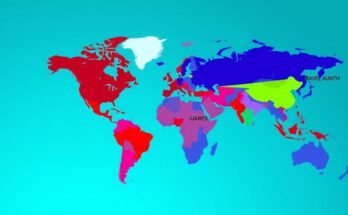A 7.6 magnitude earthquake in the Caribbean Sea triggered temporary tsunami advisories for Puerto Rico and the Virgin Islands. While the NTWC canceled the advisory later, NOAA warned of potential wave heights up to 3 meters in Cuba. Fortunately, there were no recorded damages or alerts for the U.S. mainland.
On Saturday, a significant earthquake registering a preliminary magnitude of 7.6 occurred in the Caribbean Sea, approximately 130 miles southwest of Georgetown, Cayman Islands, around 6:30 p.m. local time, as reported by the U.S. Geological Survey (USGS). This seismic event prompted a temporary tsunami advisory for Puerto Rico and the Virgin Islands, leading local authorities to advise residents to avoid beaches and coastal areas due to potential hazards from rising sea levels and flooding.
Shortly after, at approximately 8:15 p.m., the U.S. National Tsunami Warning Center (NTWC) announced the cancellation of the tsunami advisory. However, the agency cautioned that abnormal currents could persist, advising caution near coastal waters. As noted on X, “While alerts have ended, strong and unusual currents may continue. Be careful near the water and use caution.”
The National Oceanic and Atmospheric Administration (NOAA) indicated the potential for tsunami waves measuring between 1 to 3 meters above tide levels along certain coasts of Cuba. They provided specific forecasts that suggested wave heights could reach up to 3 meters for Cuba and 0.3 to 1 meter for Honduras and the Cayman Islands, emphasizing that the threat was significant in those areas. The Cuban government also advised residents to evacuate beachfront zones for safety.
According to the USGS, the earthquake was caused by strike-slip faulting occurring in the shallow crust near the boundary between the North American and Caribbean tectonic plates. The agency explained that the rupture was likely on steeply dipping structures with varying orientations. Thankfully, reports indicated no immediate damage in the wake of the earthquake, and there was no tsunami alert issued for the U.S. mainland.
The Caribbean region is seismically active due to the interaction of the North American and Caribbean tectonic plates. Earthquakes in this area can lead to tsunamis, posing a risk to coastal populations. The USGS monitors seismic activity and issues alerts to help citizens prepare for potential disasters, while NOAA assesses tsunami risks and provides forecasts about potential wave heights and impacts on different areas. Such incidents necessitate prompt government responses to ensure public safety.
In summary, a notable 7.6 magnitude earthquake triggered tsunami advisories for Puerto Rico and the Virgin Islands, although these warnings were subsequently lifted. Despite the risk of significant wave heights along some coasts, no damage was reported after the quake. Authorities continue to emphasize safety precautions near coastal waters due to lingering unusual currents.
Original Source: keprtv.com




